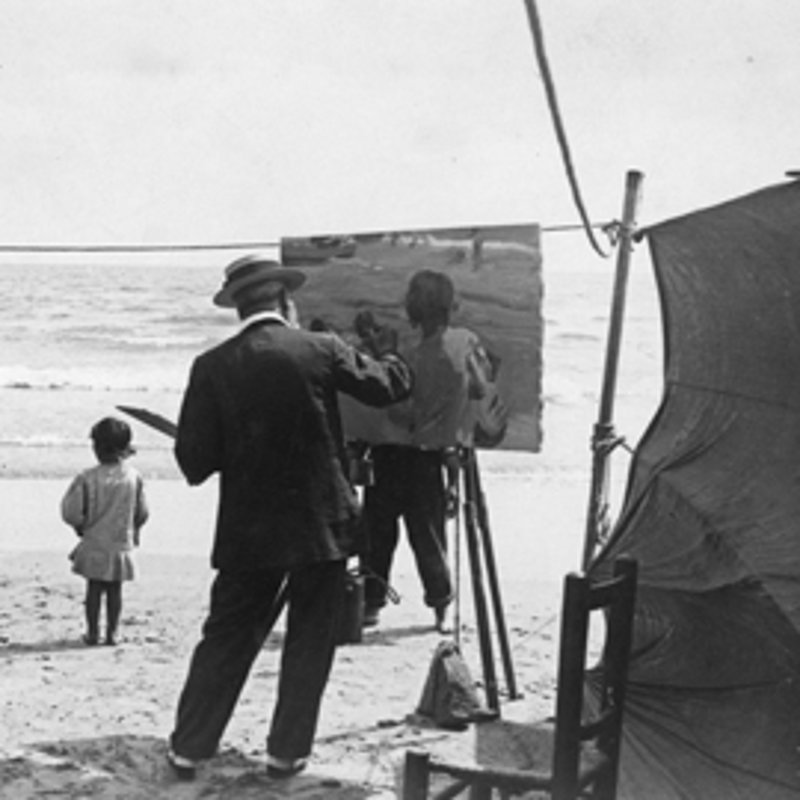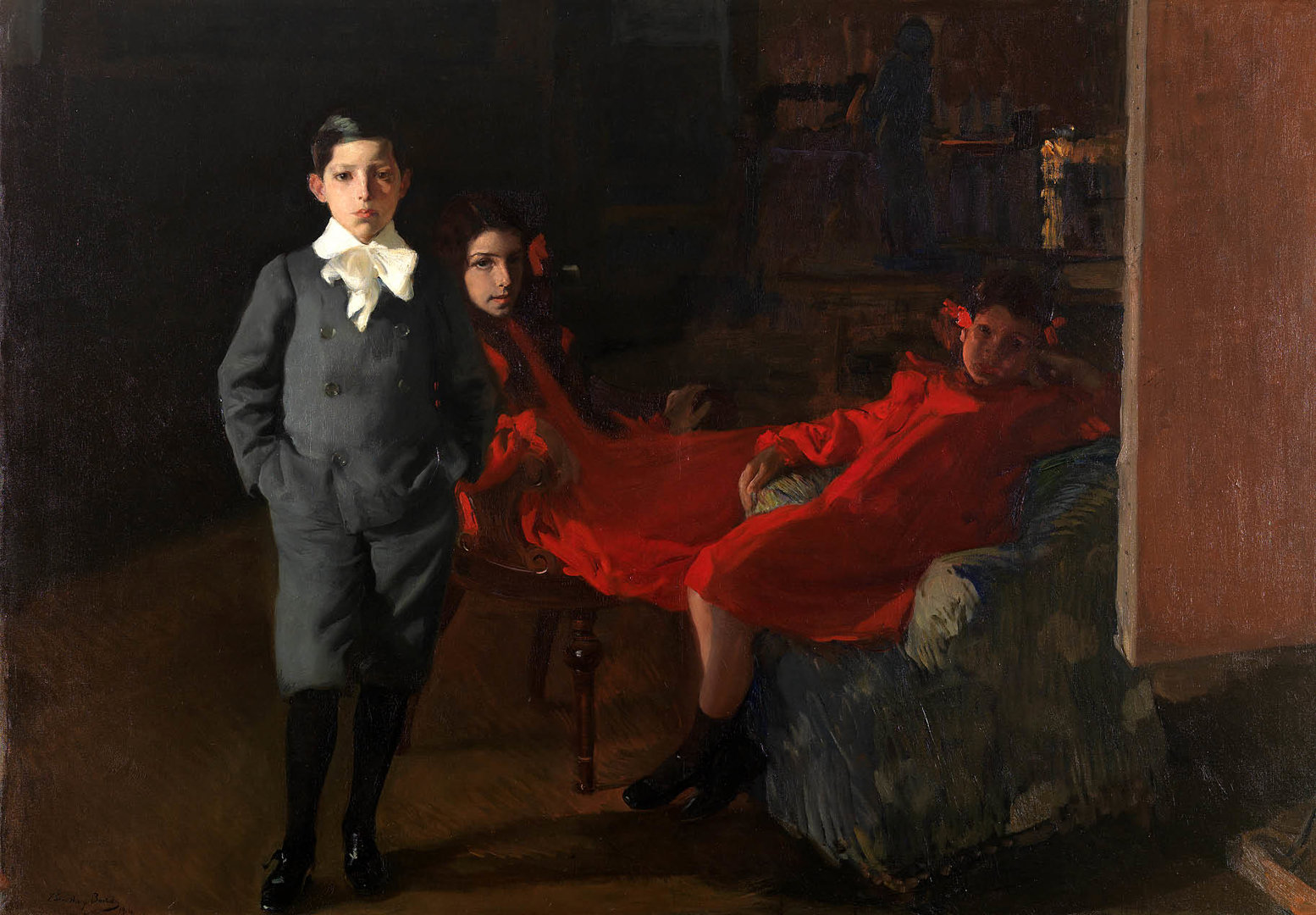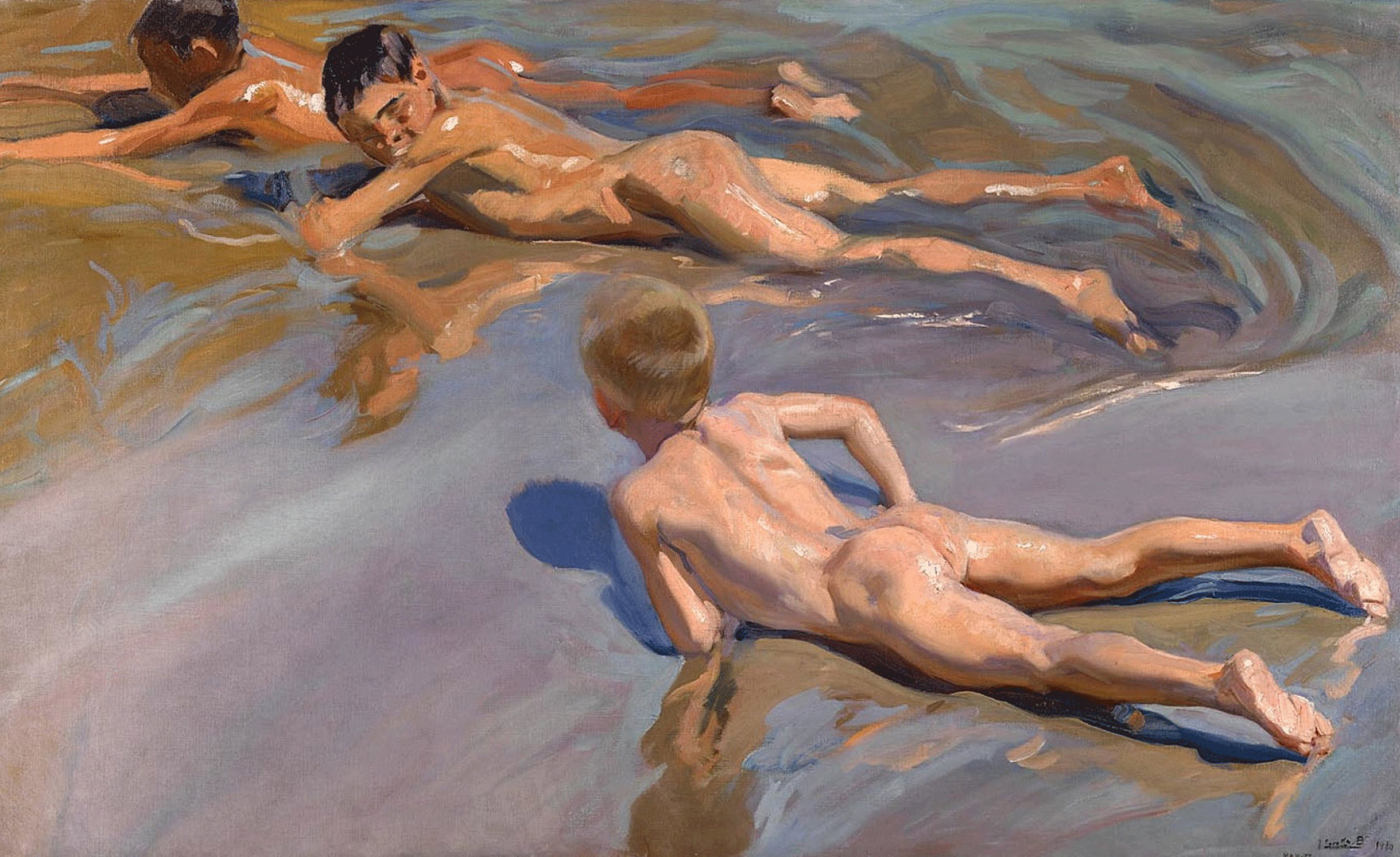
Bright colours, bold brushstrokes, and unexpected angles
In the tradition of the Spanish Old Masters
Sorolla was keen to establish his place among the hugely influential masters of the Spanish tradition, Velázquez and Goya. He saw the works of Velázquez for the first time in 1881 during a visit to the National Exhibition of Fine Arts in Madrid. We see the Old Master’s subsequent influence on both Sorolla’s use of light and shade to create depth and also his approach to composition. The shadowy effect and sombre colours of his work, 'My Children' (below), for example, are reminiscent of Velázquez’s dark tonal compositions and limited palette.
A new approach to composition
Sorolla was extremely aware of photography and of the possibilities it opened up for him. He felt he could achieve in colour some of the casual aspects that photography had introduced into visual experience. We see the influence of photography in the way Sorolla crops compositions and introduces exaggerated angles. In his garden pictures, he paints famous monuments but often chooses oblique, strange, and unexpected angles.
Sorolla also uses water and reflection a great deal, particularly in his paintings of the Alhambra and Alcázar. Buildings and their reflections merge in pools and fountains; intriguing mirror images trick our eyes. At the beach, he sometimes painted from a platform built out into the waves; a vantage point from which to view the play of light on the sea and the wet bodies of his subjects.
Painting technique
Sorolla’s skill at capturing the intense Mediterranean light is remarkable. As French critic Henri Rochefort acknowledged: 'I do not know any brush that contains as much sun.' In the tradition of painting 'en plein air', he painted quickly, catching transient moments; a billowing veil, a momentary reflection. He expertly used long bravura brushstrokes and touches of mauve and orange to evoke the play of light on wet bodies in his painting 'Boys on the Beach' (below).
In Sorolla’s later paintings, we see a shift in his composition; it becomes less formal, free and open, and the play of paint has as much fascination as what is being depicted; the pattern of paint takes over as a way of suggesting form. In 'The Siesta' (below) , the reclining figures of his wife Clotilde, daughters Elena and Maria, and friend Maria Teresa García Banus loll on the grass – a swirl of bright and dark green – their crumpled dresses suggested by thick strokes of white, pink, and very pale blue.




